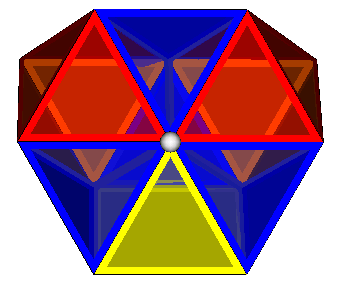
>Honeycombs derived from the octahedral/tetrahedral honeycomb, Page 2
The base 10Y4-8T-n honeycomb, discussed on the previous page, can also be divided into layers where the exposed faces are all triangles.
The above image shows one half of such a vertex. The view is directly down on the vertex and is colour coded as follows: the tetrahedral faces are blue. Pyramidical faces where a 4-3-3 vertex is submitted to the honeycomb vertex under consideration are coded red and orange. Pyramidical faces where a 34 apex is submitted to the honeycomb vertex under consideration are coded yellow.
If the 10Y4-8T-n honeycomb is formed, with this colour coding in place (above), it can be seen that the yellow coloured triangular faces are opposite each other at the central vertex. If one layer is now rotated with regard to the one below the yellow faces can be moved to be 2pi/3 radians apart, pi/3 radians apart or adjacent. The naming convention is based on the IUPAC convention for cyclic organic compounds (rather than the usual polyhedral notation as used by Norman Johnson for the Johnson solids). With the 10Y4-8T-n honeycomb being termed 'n' one rotation by pi/3 from this being termed 'ortho', two rotations 'meta' and three rotations 'para'. These are shown on the diagram below.
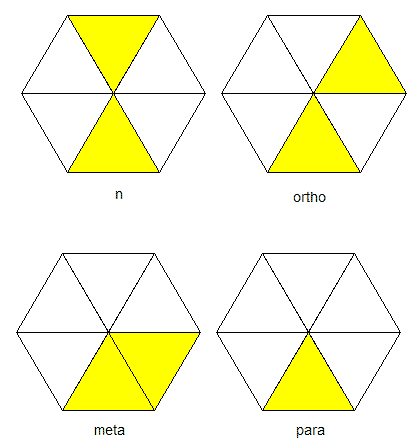
The table below shows all four modes.
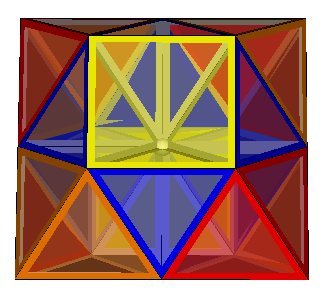
10Y4-8T-n |
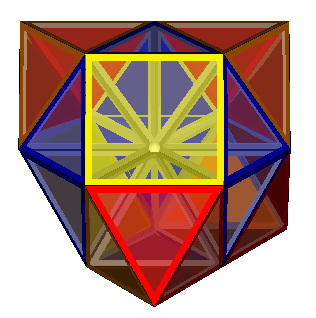
10Y4-8T-ortho |
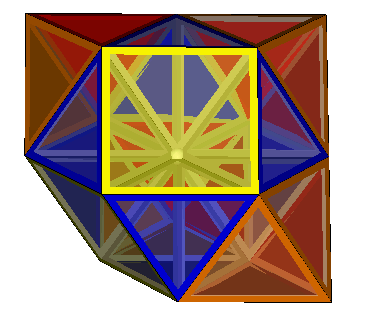
10Y4-8T-meta |
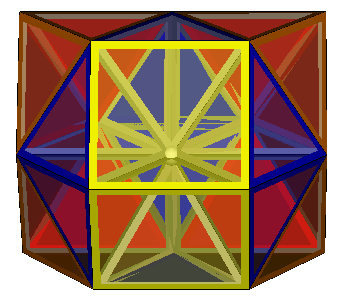
10Y4-8T-para |
The ortho and meta modes each have two
forms, an
alternating form where the gyrations (of pi/3 or 2pi/3
respectively)
alternate back and forth, and a helical form where the gyrations
continue in the same direction. (Discovered by Richard Klitzing, 2013).
Incidence matrices for all the above honeycombs are given by Richard Klitzing here.
Next: Honeycombs derived from the octahedral/tetrahedral honeycomb, Page 3
Back: To honeycombs index
Return: To main index